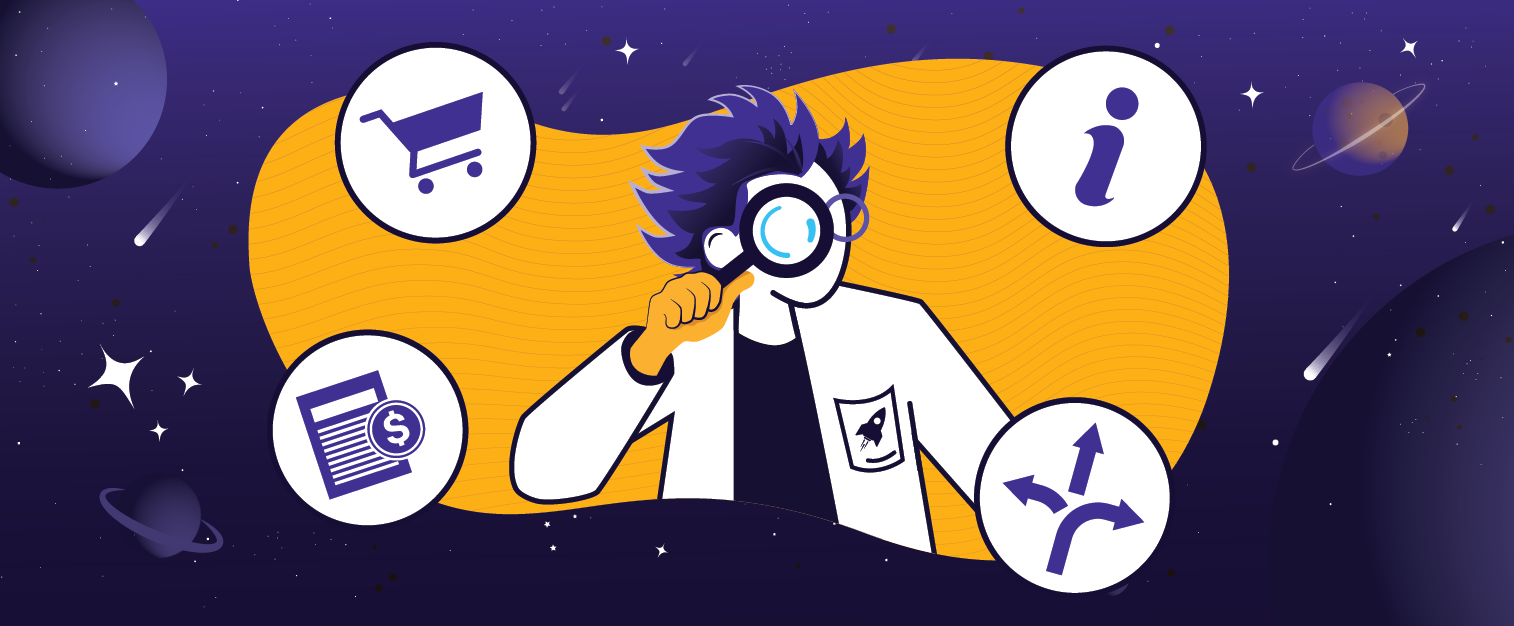Sending your data to our servers, please wait...





Oops... No results found.
Please try a different search phrase.
Galactic Fed 9 min read
Fed Fix Growth Hacking: 10 Effective Ways to Build Brand Awareness
Written by Sarah Edwards
Content Writer @ Galactic Fed
Expert reviewed by Rachel Meyer
Associate VP of Client Success @ Galactic Fed
Published 16 Apr 2024

Consumers instantly recognize your company’s logo, jingle, products, and even your color scheme. That’s a great indicator that you have cultivated strong brand awareness, And it’s great news for your business, seeing as how 77% of consumers report that they are “likely to make purchases” based on brand names alone.
Those that reach peak recognizability can transcend niche categories and become synonymous with the types of goods they produce. Just take the word “soda,” for instance. For many, brands like Coca-Cola and Pepsi almost immediately spring to mind.
The thing is, there are likely plenty of customers out there who may still not be familiar with your business, products, or value proposition. Pulling them into your marketing fold means generating even more effective buzz.
Luckily, in this first edition of the new Galactic Fed Growth Hacking series, our team is providing practical tips for raising brand awareness so you can stay at the top of your game. Whether you want to maintain a dominant position in your market or gain ground on the competition, these tips will help you sprint toward your goals!
What Is Brand Awareness?
In simplest terms, brand awareness refers to the recognizability of your company and its product based on its name, logo, color scheme, and other such marketing elements.
However, generating brand awareness is about more than simply letting customers know your company exists. You want consumers to associate your products, brand, and logo with positive experiences and perceptions.
Whether you plan to revive an older product line or service or intend to launch a new one, it’s important to maximize your brand awareness through dedicated campaigning and reinforce it in all of your marketing efforts. Showcase the value you provide and be consistent in the way you present your company.
10 Growth Hacking Tips to Boost Brand Awareness
While you may not be able to achieve Coke or Pepsi’s level of market dominance, you can still work to turn your product into a household name with these growth-hacking techniques:
1. Be Consistent With Your Branding
First and foremost, you must ensure that your visual identity is consistent across all platforms and marketing materials. Consistency in things like your logos, colors, and fonts helps in making your content and products easily recognizable.
But still, you need to remember that your voice is more than just the colors and logos you choose. Your values (and the ways through which you exemplify them) also play a critical role in how consumers perceive your business.
2. Create Great Content
Your customers are the lifeblood of your business. But what sort of value are you providing to them outside of the goods you sell? If you can’t come up with an immediate answer, it may be time to reevaluate your content marketing strategy.
Through content marketing, you can educate, inform, or entertain your audience. With that in mind, take the time to create valuable assets such as blog posts, videos, infographics, and podcasts that showcase your expertise and offer solutions to your audience’s problems.
3. Monitor Social Media Engagement
A notable 47% of marketers struggle to create impactful social media strategies for building brand awareness.
To that end, one great way to assess your social media success involves monitoring customer engagement and general sentiments toward your brand. Use analytics tools to detect trends and proactively address any concerns about your products or services.
Additionally, maintain an active presence on social media platforms relevant to your audience. Engage with your followers by responding to comments, sharing user-generated content, and participating in relevant conversations.
4. Seek Out Influencer Partnerships
According to Shopify, 69% of consumers trust influencer recommendations. Adding influencers to the mix can, therefore, make a huge impact on brand awareness and business growth. However, it’s important to choose influencers who align with your target audience and have similar followings to your own.
You don’t have to partner with mega influences who have millions of followers, either. Micro-influencers (those with follower counts in the tens of thousands) can be great assets for connecting with niche markets and increasing your visibility.
5. Revisit Your SEO Strategy
No matter how sophisticated your marketing strategy becomes, there’s never a point at which you’ll “outgrow” the need for search engine optimization (SEO). It is a never-ending process, and that means you should continuously work to improve your skills and stay ahead of your competitors.
Periodically revise your SEO efforts and ensure your website is ranking well in organic searches. You’ll need to use relevant keywords, create high-quality content, and optimize meta tags.
Don’t neglect the technical aspects of SEO, either, like page load speeds and overall accessibility. Google considers these factors when assigning your site’s ranking, and you will fall on its and other search engine results pages (SERPs) if your website is clunky.
6. Don’t Sleep On Email Marketing
In a world of fancy campaigns and high-production content, some brands treat email marketing as an afterthought. Don’t be one of them. Email delivers an average return on investment anywhere between 3600 and 4000% for every dollar spent!
Furthermore, email campaigns are both cheap and effective, especially when you use them to complement your other brand awareness efforts. For maximum impact, remember to segment your audience and create distinct mailing lists for each consumer category.
For example, prospective customers who have never made a purchase from your business should be placed on a distinct mailing list. You can create a different list for loyal customers and yet another for individuals who abandoned their shopping carts before finalizing their transactions.
7. Be Proactive About PR
Depending on your industry, it may be a good idea to build relationships with bloggers, journalists, and media outlets. These partnerships can help secure press coverage for your brand.
For example, if you have a good relationship with a major media outlet and are preparing to launch a new product, your business could publish a press release to generate buzz.
If you encounter any public relations (PR) headaches down the road, these connections will help with damage control as well by telling the whole story of the incident. PR is equal parts promotion and protecting the brand reputation you’ve worked so hard to cultivate.
8. Participate in Events
Host or sponsor events that align with your brand values and target audience, such as industry conferences and trade shows.
If you operate a small to mid-sized business, you can even use local community events as a means of forming strong community relationships. Doing so will showcase the value you provide to the area and encourage community members to support your organization. Of course, just remember to choose causes that are consistent with your stated mission, vision, and beliefs.
9. Start a Referral Program
Happy customers are some of the best brand ambassadors. Creating a referral program incentivizes already-satisfied consumers to turn their friends and family to your business.
There are no one-size-fits-all referral programs. When creating your program, choose a framework that is simple, easy to sign up for, and economically viable. Points-based programs can be a great option, as they gamify the referral process and get customers excited about unlocking rewards by racking up a higher score.
Alternatively, you can offer discount coupons for both parties involved in a referral. For example, if one of your loyal customers talks a relative into ordering $100 or more of your goods, you could reward both people with free shipping or discount codes.
10. Leverage Partnerships and Collaborations
Lastly, form strategic partnerships with other brands or businesses that complement yours. These could involve co-hosting events, cross-promoting products, or launching joint marketing campaigns.
By pooling your resources and taking advantage of customer base overlap, you and your partners can magnify your reach and generate high-quality leads for one another. Referring past customers to each other can be particularly impactful, as a satisfied client will likely trust the recommendations of another business.
Join the Galactic Fed Growth Hacking Series
Alone, any of the brand awareness strategies listed above can help you get noticed and acquire new customers. But when you combine multiple tactics, you’ll accelerate your company’s growth trajectory and achieve your revenue goals.
Leverage the power of brand awareness to achieve sustainable growth and market dominance today by following along with the Galactic Fed Growth Hacking series. Stay tuned for more exciting insights that will support your business goals!

Sarah Edwards
Content Writer @ Galactic Fed



